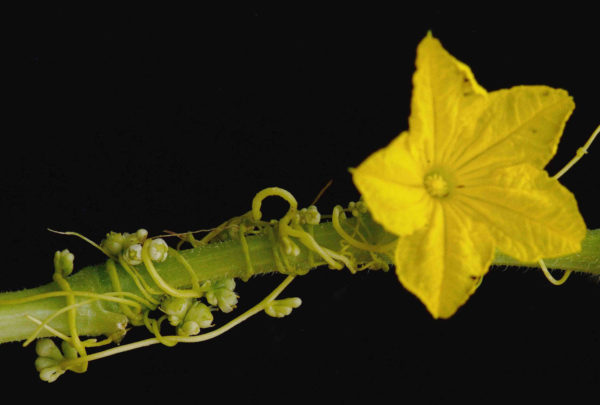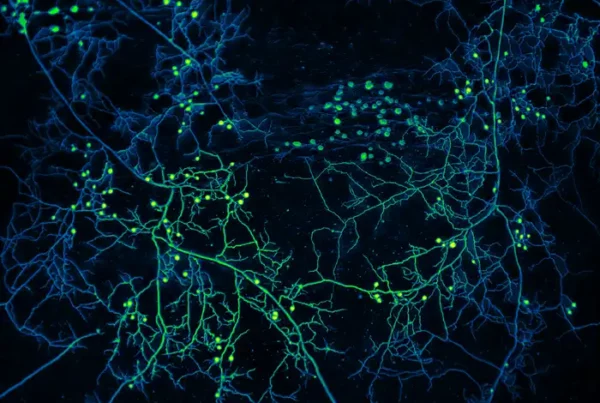About 4,000-5,000 parasitic plant species exist. Among these, dodders (Cuscuta, Convolvulaceae) are distributed worldwide. Compared with normal autotrophic plants, they have a unique morphology – they are rootless and leafless and carry out no or very little photosynthesis.
Flowering is critical to reproduction in higher plants. Leaves sense environmental factors, such as day length (photoperiod), and initiate flowering programs when the environment and internal physiology are appropriate.
However, sequencing of dodder genomes has indicated that dodders have lost many genes that are critically important for controlling flowering in autotrophic plants. Thus, dodders are likely to have an exceptional flowering mechanism.
Recently, researchers led by WU Jianqiang from the Kunming Institute of Botany of the Chinese Academy of Sciences uncovered the underlying mechanism for dodder flowering. The team first investigated the flowering time of the dodder Cuscuta australis and found that C. australis always synchronizes its flowering time with the flowering time of its hosts.
The FT gene is very well conserved and it encodes a very important signaling protein that activates flowering. However, analysis of the FT gene in C. australis suggests that the dodder FT gene seems to be a pseudogene (i.e., it is nonfunctional).
Using biochemical tools, the team further demonstrated that when the host expresses FT signals, the flowering-inducer FT can travel into C. australis and activate the flowering program of C. australis.
“The dodder does not flower autonomously; instead, when the host plant produces the FT signal protein to activate flowering, the host-produced FT protein is transported into the dodder, thereby activating dodder flowering,” said WU.
This study reveals that by eavesdropping on host FT flowering signals, the dodder can synchronize its flowering with its hosts.
This behavior is important, as it may enable dodders to parasitize diverse host plants: If the dodder has a fixed flowering time, and it is much later than the host, then when the host flowers, the nutrient level of the host plant usually drops because of seed development, and the host may even die before the dodder flowers. On the other hand, if the dodder flowers much earlier than the host, dodder growth will end prematurely, and in this scenario, the dodder does not make as many seeds as the dodder that flowers at a time similar to the host.
This study sheds important light on the physiology, ecology, and evolution of dodders and may provide new strategies for biocontrol of parasitic weeds in agriculture and forestry.
Read the paper: PNAS
Article source: Chinese Academy of Sciences
Author: ZHANG Nannan
Image: Dodder (Cuscuta australis) flowers together with the host cucumber. Credit: Dr. GUO Han








